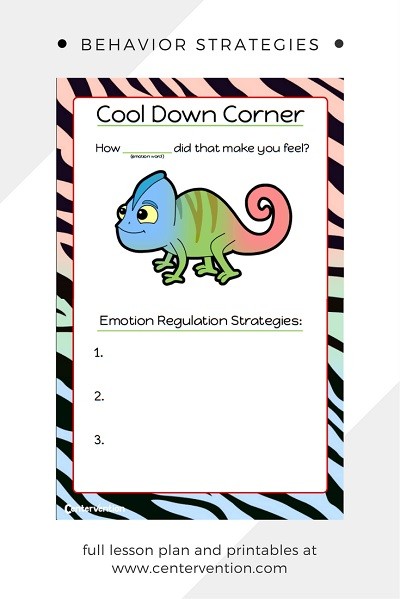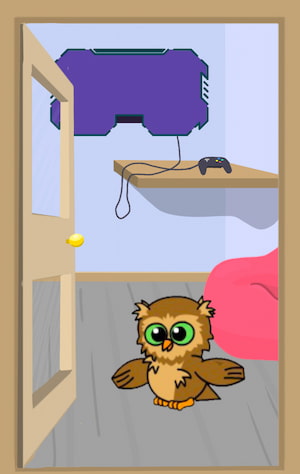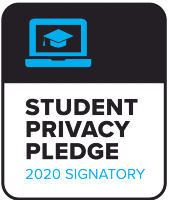Strong emotions can make it difficult to make good choice, so it is important that students learn how to manage their emotions, and a calm down corner can be a great place for students to regain their composure.
Step one is to understand they may not be able to choose what emotions to feel in a situation, but they can choose what to do with those feelings.
With the lesson below, students will list emotion words, identify emotion regulation strategies, practice identifying their own emotions in a situation, and learn how to apply emotion regulation strategies to manage their feelings.
After completing this lesson, you will be one step closer to a calm classroom.
And for students using our online programs, there is an option to access a digital cool down corner (see below).

Recommended Grade Level: Elementary
SEL Skill(s): Emotion Regulation
Duration: Variable
Materials:
- Colored pencils or Crayons
- Poster and reflection sheet (Available when logged in to your Centervention Educator account)
Calm Down Corner Directions
- Laminate the poster before the lesson.
- Call on students to list as many emotion words as they can. Write the words on the board.
- Choose a few of the emotion words students list from different emotion groups (happy, frustrated, worried, etc.). Ask a few students to describe situations that might make them feel these emotions.
- Use some of these situations to discuss whether they would cause a small emotion, like being slightly annoyed, or a big emotion, like being furious.
- Explain to students that when they are feeling big emotions in your classroom, that they can choose to excuse themself and go to the Calm Down Corner. (Before the lesson, set up this spot in your room with a bean bag, chair, or something similar).
- Stick your laminated poster to the board or under a document camera. Explain when students get to the Calm Down Corner, they should first use a strategy to manage their emotion. Ask students if there are any strategies they already use to help create a calm classroom. Brainstorm until you come up with three strategies, and write them on the laminated poster with a wet erase marker.
- Pass out a chameleon reflection sheet to each student and explain the procedure for the Calm Down Corner (below). Have students fill out their sample worksheet during this lesson.
Using the Calm Down Corner
When students need a break to get their emotions in check, you can have them spend a few minutes in the cool down corner. Have them:
- Use one of the emotion regulation strategies on the poster to get their emotions under control.
- Once they have calmed down, they’ll fill out the reflection worksheet:
- What happened? Students should write a sentence describing the situation that led them to go to the Cool Down Corner. In this introductory lesson, have students write a sentence about a time when they had a big emotion in the past.
- How did that make you feel? Students should choose the emotion word that explains how that situation made them feel and write that word on the line.
- How _______ did that make you feel? The different colored chameleons represent different degrees of emotion. So, for example, if the student chose “angry” as the emotion he was feeling, was he “not very” angry (blue), “very” angry (red), or somewhere in the middle.
- Students should use their colored pencils or crayons to color the first chameleon to match how they felt when they got to the Calm Down Corner.
- Next, students should color the second chameleon to match how they feel after using their emotion regulation strategies.
Digital Cool Down Corner
With Centervention’s online programs, students have the option of spending time in a digital cool down corner. Entering this space should not be limited to times when students are experiencing strong emotions, but rather, it can also be used when students need a quick break.
But don’t worry, Centervention’s digital cool down corner is built around a series of Social Emotional Learning opportunities!
For example, your student will be encouraged to assist Owlivia in learning how to brush her teeth, help her find something to eat, and cheer her up when she is sad.

